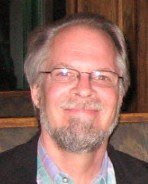"No world peace without religious peace" is a quotation from Hans Küng, the Swiss Catholic theologian who has been so active in the work of worldwide interfaith reconciliation. When we look around the globe, we see that a high percentage of conflicts and wars have a religious dimension. Virtually all of the various wars in the Middle East are obvious examples, including America's seemingly endless wars in Iraq and Afghanistan. Küng puts forward the argument that such conflicts will not be resolved by politics or weapons alone; the underlying religious issues must be addressed as well. It is not just nations that are at war, but religions too. If Küng is right, then interfaith reconciliation is a necessity for peace on earth.
I first became aware of Küng's work at the Parliament of the World's Religions in Chicago in 1993. It was at this historic global interfaith gathering that Küng put forth his idea of a global ethic, a set of principles that could be adopted by all of humanity, that would favor no one group over the others and could enable the human race to live in peace. The 1993 Parliament in Chicago was followed by Parliaments in Cape Town, South Africa, in 1999 and Barcelona, Spain, in 2004. The next Parliament will take place in Melbourne, Australia, December 3 through 9, 2009. Once again a movement will be made to bring the faith traditions of the earth into cooperative interchange of ideas, beliefs, and commitments.
At the 1999 Cape Town Parliament, Nelson Mandela proclaimed that the worldwide scourge of AIDS needed the cooperative effort of the world's religions to be conquered. Today the world, and Africa especially, are still ravaged by this disease. The 2004 Parliament in Barcelona focused on four major global issues: clean drinking water, religious violence, third world debt, and the plight of refugees. Significant projects were undertaken in all four areas by religious leaders.
The theme of the 2009 Parliament in Melbourne is "Hearing Each Other, Healing the Earth."
You still have time to go, and you might get to talk to Hans Küng yourself. Find out more at www.parliamentofreligions.org.
If it is true that the huge social problems of the world need religious cooperation to be overcome, or at least the cessation of the conflicts between religions that exacerbate these problems, then interfaith involvement becomes a kind of moral imperative. There are many ways to participate, and your church, mosque, temple, or synagogue may offer such programs. I have found the Interfaith Alliance, supported by the late Walter Cronkite, to be a creative, active group for interfaith issues within the United States, and the Parliament of the World's Religions to be the cutting edge movement for global interfaith dialogue and action. I encourage you to explore these two good options and others as well.
Religion, to be helpful to humanity in the 21st century, must lead to dialogue and peace, not hatred and war. Now we must each figure out how to contribute toward that goal. What are your ideas?
Monday, September 21, 2009
No World Peace Without Religious Peace
Labels:
Hans Küng,
Interfaith Alliance,
Parliament,
peace,
Walter Cronkite,
war
Subscribe to:
Post Comments (Atom)




i watched a bbc program (how art made the world) last night that indicated that we make certain images in art according to how we feel. that seems like a no-brainer, but when applied to religious art, it turns out that historically, cultures that were threatened, at war, or generally depressed had more 'scary' art images than cultures who were stable.
ReplyDeletethe programme even went on to say that political leaders use art (logos, etc) to create FEAR in society in order to control that society. a society that experiences images or concepts that are stressful and fearful is a society that is more likely to be cooperative with heavy handed leadership.
a society that experiences positive, peaceful and hopeful images and concepts is less likely to be cooperative with government, although they are also less likely to demand great change.
so to get back to your question- how do we contribute to the goal of peace and dialogue in our society? reducing fearful images or fear in general would be helpful. creating images of hope would be helpful. instead of watching an airplane crash into the twin towers over and over, we would do our brains and our culture a service by viewing the rebuilding, the helping, and the hopeful moments.
jen mcd
Hi Jen,
ReplyDeleteThanks for your comment. Sorry for taking so long to respond. I completely agree that images of fear affect our minds and behavior patterns. Rebecca Parker has written about how the image of the crucifix was not widely used in early Christianity, but was later promoted heavily when leaders wanted to recruit soldiers to go off to war. The implied message was redemption through violence. We need to consciously work on creating positive messages in our churches, homes, schools and workplaces, messages of tolerance, peaceful cooperation and non-violence.